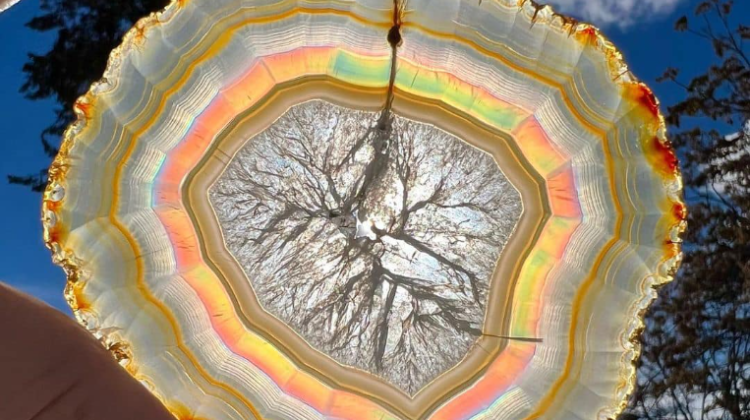
If you’re a fan of colorful gemstones, you’ve probably heard of agate, a type of chalcedony that comes in a variety of colors and patterns. But have you heard of iris agate? This lesser-known variety of agate is a true gemstone treasure, with a stunning display of colors that resemble a rainbow. In this article, we’ll take a closer look at iris agate, including its composition, optical properties, and how to cut, observe, and display it.
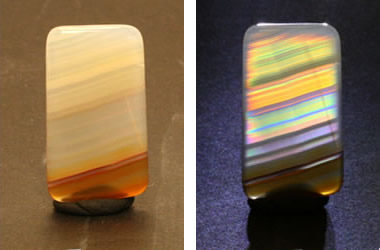
What is Iris Agate?
Iris agate is a type of finely-banded agate that produces a spectacular display of colors when it is cut properly and illuminated from behind, sending light through its very thin bands. The name “iris agate” comes from the rainbow-like display of colors it produces, resembling the iris of an eye. The most striking feature of iris agate is the diffraction grating effect, where the light passes through the agate’s bands and produces a display of spectral colors.
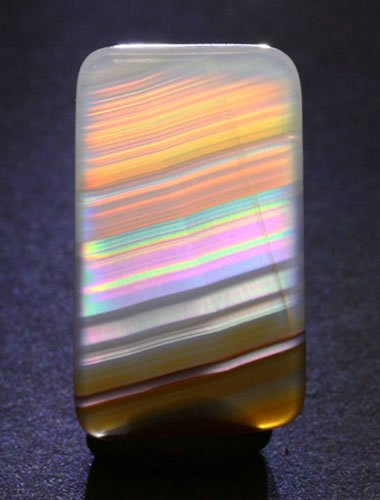
Composition of Iris Agate
Iris agate is made up of tiny silica crystals that form in concentric layers around a central cavity. The colors of iris agate are produced by the diffraction of light as it passes through the agate’s thin bands, which are translucent to transparent. These bands have at least 15 to 30 bands per millimeter, which are countable under a gemological microscope. Some parts of the agate have a higher density of bands, but they cannot be counted because they are very thin and the agate is milky.
Composition of Iris Agate
The spectacular display of colors produced by iris agate is due to the diffraction of light as it passes through the agate’s thin bands. When light strikes the agate, it encounters the edges of the tiny bands, which disrupt the flow of light. The rays of light take many separate paths through the thin bands of the agate, acting as a natural diffraction grating that diffracts the light and produces a display of spectral colors.
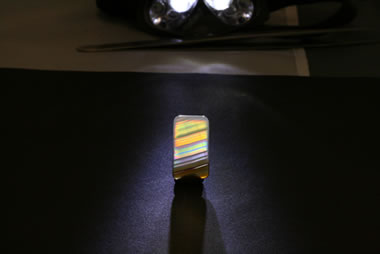
Observing and Displaying Iris Agate
To observe or photograph iris agate, the stone must be between the observer’s eye and a strong light source. The illumination must come from behind the stone. For this reason, iris agate is not a good material for many jewelry uses. It would not work in a ring or a pin. Very thin slices of agate could be used as dangle earrings; however, they would only exhibit the iris effect when the observer is looking at the earrings and the person wearing them is between the observer and a strong light source.
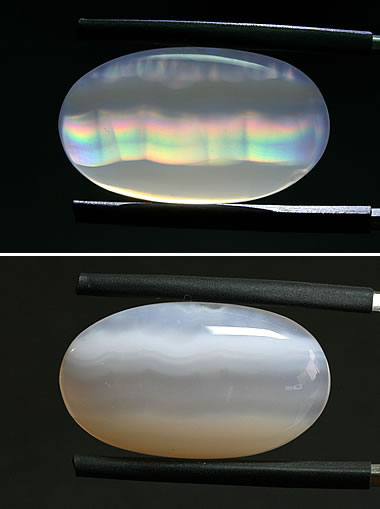
Most agates will not produce an iris effect. Candidates are those that are very finely banded and nearly transparent. They must be sliced so that the sawn surface is perpendicular to the banding of the agate. The thinner they are sliced, the stronger the spectral colors. The surface of the agate should be brightly polished to allow the easy entry of light without the scattering caused by an unpolished surface.
Iris agates can be placed on a display stand or dangled on a string in front of a sunny window. They can be mounted in a display case with backlighting. Some people display iris agate in jewelry. The requirement for backlighting prohibits a good spectral display in a ring, pin or brooch. The stone must be suspended to have a light source and observer on opposite sides of the stone. The best jewelry use is in earrings.
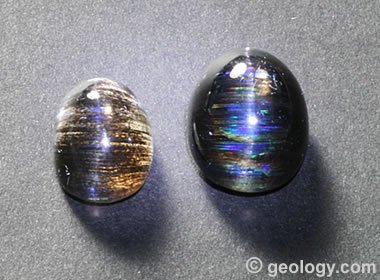
Unappreciated Iris Agate
Despite its beauty, specimens of iris agate are not often seen in museums and mineral shows. However, they are probably much more common than most people realize. Most agate

Leave a Reply